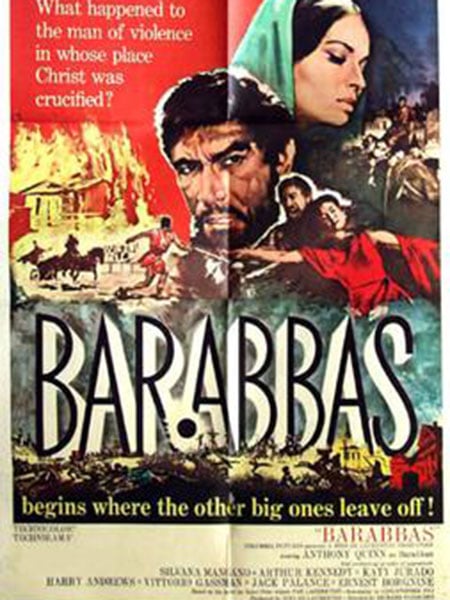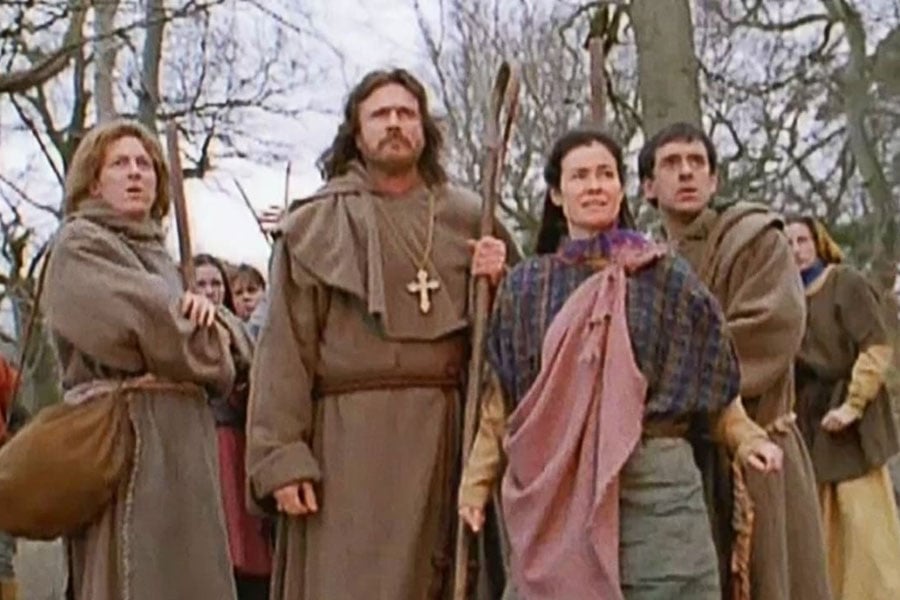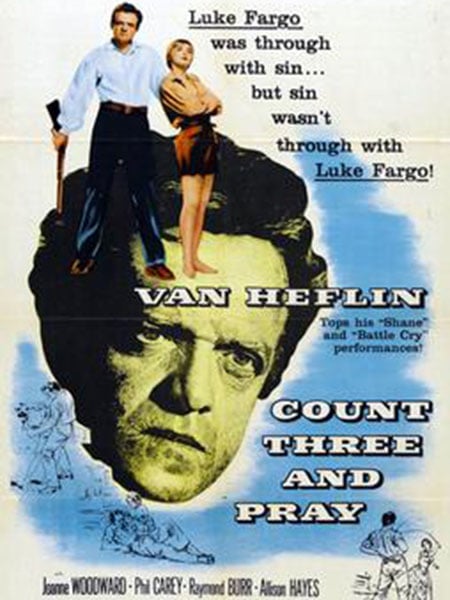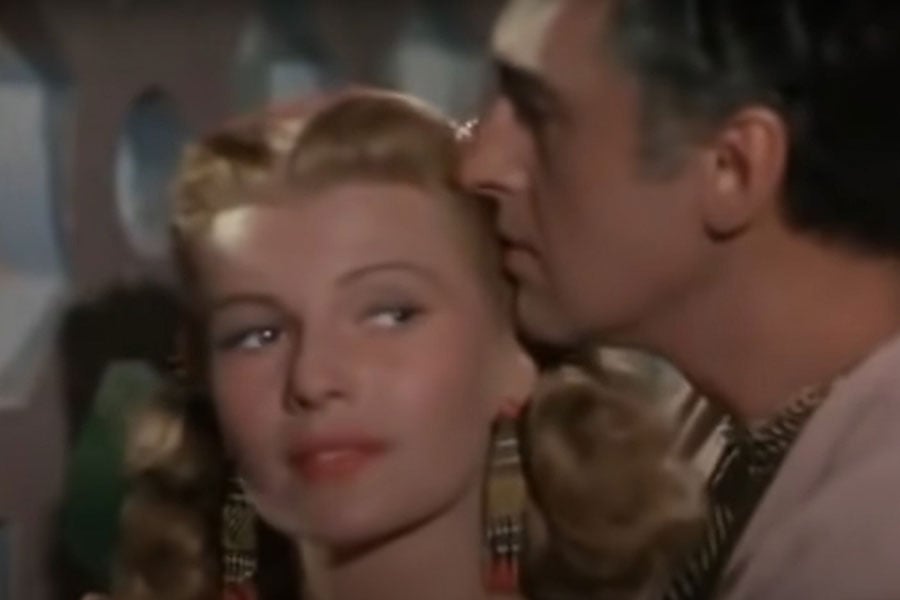Mystery, miracle, morality, and mirthful movies for a child’s film library, pt. 3

(Pexels/Ron Lach)
Your Humble Scribe has utilized the medieval classifications of plays for family movie enjoyment: Mystery, Miracle, and Morality narratives. To these three is added Mirthful — outright comedies or movies so bad they can be watched simply for fun.
NOTE: Wright’s Wrating system is based on nothing other than my own opinion. Parents are urged to preview my selections to ascertain whether my choices coincide with their own tastes and opinions.
Mystery Movie
“Give Us Barabbas!” first appeared as a Hallmark Hall of Fame special on NBC. Written by Henry Denker and directed by George Schaefer, it was telecast on Palm Sunday, March 27, 1961. No stranger to Scripture, beginning in 1947, Denker assisted in adapting Catholic author Fulton Oursler’s book, The Greatest Story Ever Told, into a continuing dramatic series, which ran for a decade on ABC Radio. “Give Us Barabbas!” is the kind of drama television used to excel at, when network executives still believed that mature adults watched and welcomed serious, three-dimensional character studies in a Christian context.

Barabbas is shunned by his bandit buddies who are convinced he was freed to spy for the Romans. Obsessed with learning why Jesus of Nazareth died in his place, Barabbas engages in two improbable conversations. First, he speaks with a Roman sentry, cleaning things up on Calvary, who describes Jesus’ death. Later, the brigand engages Pilate, who laments the difficulties of governing Judea. A few days later, he finds Christ’s disciples and begins to consider the possibility of His Resurrection.
Reviewers in both The Los Angeles Times and The New York Times gave the production high marks. James Daly as Barabbas and Kim Hunter as Mara, the woman who loves him, do well with a literate, though talky, script; as does Dennis King playing a distraught Pilate. And it is a pleasure seeing Ludwig Donath, so often cast as a villain, playing a sympathetic role as Joseph of Arimathea.
Wright’s Wrating: For mature-minded preteens and teens; the presentation will likely put younger children to sleep. Available on YouTube.
SUGGESTED DISCUSSION TOPICS
* What had Pilate learned after he interrogated Jesus?
* Explain how “Give Us Barabbas!” is meant to use drama as a means of teaching human motivations and not as an attempt to present historical reality.
Miracle Movie
St. Patrick: the Irish Legend (2000) is an enjoyable account of the life of the Apostle of Ireland, vigorously portrayed by Patrick Bergin. Every so often we hear him reading from the saint’s Confessions. He describes the blessings, tribulations, and joys encountered as he planted the Catholic faith in what became known as “The Island of Saints and Scholars.” Says Britannica, “Not since St. Augustine of Hippo had any religious diarist bared his inmost soul as Patrick did in his writings.”
A fun-loving teen living with his well-to-do parents (Alan Bates and Susanna York), Patrick is kidnapped by Irish pirates and sold as a slave to an Irish chieftain. Spending six years as a shepherd, Patrick learns humility and becomes a man of prayer. Escaping, he attends the clerical school founded by St. Martin of Tours. Following the disastrous mission of St. Palladius, Patrick is consecrated bishop and charged with evangelizing Ireland.

The British archbishop Quentin, played with delightful ecclesiastical venom by Malcolm McDowell, takes umbrage against Patrick for excommunicating a British Christian named Coroticus who, in Patrick’s own words, had “cruelly slain newly baptized and anointed [Chris-tians, still] dressed in white robes; the anointing was still to be seen clearly on their foreheads.” So, while Patrick labors to bring the Irish to Christ, he must also contend with Church politics.
Back in Ireland, Patrick demands an end to human sacrifice, dynamically battles evil Druids with miraculous power, destroys pagan altars, walks through fire, and melts golden idols with a wave of his hand. In the end, he can state, “In the hearts of the Irish, the message of the Lord has found a home forever.”
Wright’s Wrating: For all ages, parents taking care to explain to very young children how God watches over people He has destined for great things. Available on Amazon Prime Video or rent it on Amazon.com.
SUGGESTED DISCUSSION TOPICS
* Missionary work is often accompanied by hardship for those who bring the faith to heathen tribes. Using examples from this film ask why hardship takes place.
* His Confessions begins with the meek admission, “I, Patrick, a sinner,” Explain why humility is a necessary virtue for a missionary.
Morality Movie
In Count Three and Pray (1955), the Civil War has ended, and Luke Fargo (Van Heflin) returns to his hometown. Best known for fighting and wenching, he explains that he had a battlefield conversion and is now a minister of the Gospel. The townspeople, having long memories, aren’t so sure.
In this generally lighthearted tale, Luke tries to prove he’s changed, but it’s slow going.

Yancey Huggins, the wealthy owner of the general store (Raymond Burr), despises Luke and delights in making life hard for him. Luke’s former girlfriend, Georgina (the beautiful Allison Hayes in her best role), wants Luke but only to be pampered. And a runty girl named Lissy (Oscar winner Joanne Woodward in her first film role) has taken over the parson’s crumbling manse and threatens to shoot Luke.
To the consternation of the townsfolk, Luke races horses on the Sabbath to get wood to rebuild the church, continually gets into fights, and takes up with his old friend, the owner of the local dancehall. And there’s gossip about Luke living with the orphaned Lissy. Eventually, the local bishop is called in to investigate.
Wright’s Wrating: Children of all ages will enjoy this movie. Available on DVD or Blu-ray at Amazon.com.
SUGGESTED DISCUSSION TOPICS
* Show how this movie illustrates Jesus’s well-known maxim: “A prophet is not without honor, save in his own country, and among his own kin, and in his own house” (Mark 6:4).
* Count Three and Pray is rife with moral questions for consideration: Discuss Luke’s blunder-ing; the townsfolk gossiping; Yancey’s hatred; Georgina’s mother turning to drink to fill her empty life; and Georgina’s refusal to work, among other faults.
Mirthful Movie
In 1949, iconic director Cecil B. DeMille made a mountain of mammon for Paramount Pictures with his Old Testament tale, Samson and Delilah. Mervyn Leroy did the same for MGM in 1951 with Quo Vadis, his epic about Christians in ancient Rome. Other studios followed, hoping to cash in on Scripture.

Harry Cohn, head of Columbia, was eager to jump on the biblical bandwagon to showcase the studio’s glamorous actress-dancer, Rita Hayworth. Salome, the Bible’s most notorious dancer, seemed a natural fit, but Cohn was uneasy about audiences accepting Hayworth as a villainess. The resulting film, Salome (1953), plays fast and loose with the Gospels. It’s the kind of movie more fun to talk about its making rather than describe its storyline.
For instance, one morning Cohn called screenwriters Harry Kleiner and Jesse Lasky Jr. to his office. “What’s wrong with you guys?” he snarled. “I may have only a 4th grade education, but even I know people didn’t say ‘Yes sirree’ and ‘No sirree’ in olden days.” The bewildered writers asked to see the script. Lasky then hesitantly cleared his throat and patiently explained to his boss that the characters were addressing Emperor Tiberius saying, “Yes, sire” and “No, sire.”
Claudius (Stewart Granger), a Roman tribune, accompanies Princess Salome on her voyage to Galilee where Claudius greets his old friend, John the Baptist (Alan Badel). It’s never explained how they met. However unlikely the idea, it can, at least, be traced back to Luke 3:14 when John tells soldiers to be content with their pay.
Badel seems to be auditioning for Othello in summer stock, playing the Baptist as a zealot, forever searching the heavens. His camel hair costume is designed directly from a holy card. The otherwise distinguished actors, Charles Laughton as Herod Antipas and Dame Judith Anderson as Herodias, spend their screen time trying to upstage each other.
The Monthly Film Bulletin summed up the general critical comment:
Salome seems wholly fake, even its vulgarity strikes one as lifeless ... Rita Hayworth, though she performs her dances like a Trojan, seems sadly to have lost her earlier vitality. The generally oppressive and shoddy atmosphere, in fact, is relieved only by hilarious over-playing by Judith Anderson as Herodias.
Claudius falls in love with a reformed Salome, who plots to perform the Dance of the Seven Veils (composed by Daniele Amfitheatrof) to SAVE John the Baptist. Yep, the movie is that wacky. Failing that, Salome and Claudius run away to find Jesus delivering the Sermon on the Mount in ringing Oxfordian tones.
Salome really married her uncle, Philip, half-brother of Antipas and tetrarch of Iturea and Tra-chonitis. The Herods were notorious for keeping marriages within the family.
Contractually saddled with portraying a sexually leering Antipas, Charles Laughton was infuriated at the script’s butchering of Scripture. Before filming commenced on the big dance, Laughton held up production to read the real story from Mark’s Gospel in splendid detail to cast and crew. With foul and ferocious eloquence, he then swore never again to work for Harry Cohn.
Wright’s Wrating: preteens and teens might enjoy the eye-rolling and scenery-chewing. Available to rent or buy on Prime Video or Amazon.com.
SUGGESTED DISCUSSION TOPICS
* It is often said that God never writes a good third act to people’s lives. Did anyone in your family really believe Salome would become a disciple of Jesus?
* Do you think that this film is a good example of showing why producers and screenwriters should not try to improve on Scripture?
Sean M. Wright, MA, award-winning journalist, Emmy-nominated television writer and Master Catechist for the Archdiocese of Los Angeles, is a member of Our Lady of Perpetual Help parish in Santa Clarita. He responds to comments sent to [email protected].
